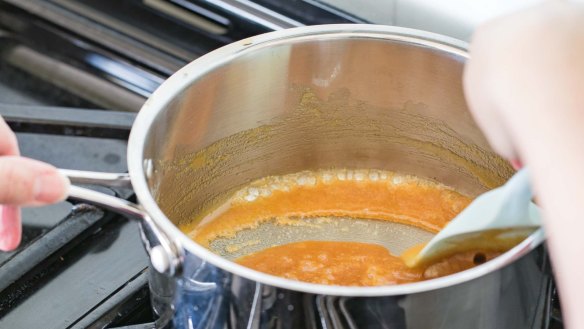Cleaning hacks: How to quickly clean wire racks and kitchen appliances

My favourite kitchen cleaning strategy: Use the dishwasher.
Alas, not everything can go in the dishwasher, and these days, mine is so chock-full of regular dishes and toddler accoutrements that fitting anything larger than a plate in is bordering on impossible.
Here are some of my favourite strategies for getting rid of messes, including on (and in) some of the more annoying appliances and tools to deal with.
Blender
Getting the blender into the dishwasher? Good luck. My preferred tactic involves squirting dish soap into the jar, adding water and letting the blender do its thing. Turn that sucker on high speed and let the sudsy water clean the sides and blade. Depending on what you've made, you might have to do a few rounds, including one with just water to rinse. But hey, less scrubbing by hand is always a plus, in my book.
Wire racks

I really loathe cleaning these, which is a problem because I use them so much, whether I'm letting baked goods cool or giving crumbed chicken pieces a few minutes to let the coating set. All those holes, all that effort! So it struck me as a duh, forehead-smacking moment when I read in Cook's Illustrated a suggestion that you merely have to turn the rack upside down in a half-sheet pan filled with soapy water. It works, and it allows for a much more even clean than when I wielded just a sponge. You can let the wire rack soak for really sticky messes (say, melted chocolate you drizzled over cookies) and then do a cursory scrub with a sponge to get rid of any remaining clinging bits. I also apply a similar strategy as a first pass for my fine-mesh strainer, submerging the basket part in a bowl of soapy water so that the mess floats to the top, making it easy to pour off.
Microwave
So you heard the disconcerting pop of something exploding in your microwave. I've been there, many times. Even if nothing actually blew up, the appliance has a habit of eventually looking kind of grimy. Again, you can harness the power of H2O, by heating up water to help loosen the gunk. Good Housekeeping suggests placing a cup of water (in a microwave-safe bowl or measuring cup, please, or you'll have a whole different kind of mess) in the microwave along with some chopped citrus or a few tablespoons of vinegar and heating it for several minutes until the water boils or things look steamy. Give everything 15 minutes to cool. Then wipe down the inside of the microwave with a sponge, cloth or paper towel.
Toaster
This is perhaps the appliance we all promise ourselves to clean as we go and never do. But, yes, your toaster needs to be cleaned sometimes. For a messy rack, use the same strategy as the wire rack, above. While removing and cleaning the crumb tray is always a good idea, you can use a pastry brush or even a baster to remove smaller amounts of debris. For typical wear and tear, soap and water is fine for spiffing up the rack, baking tray and crumb tray (soak longer if you need to). To clean the inside of the oven, Consumer Reports recommends a mix of warm water, dish soap and vinegar applied to a sponge, avoiding the heating elements.
Pans/skillets
A lot of everyday cleaning can be accomplished with soap, water and a sponge. But then you burn some caramel in your saucepan, and all bets are off. Water to the rescue, again. If you've got time and space, let caked-on food melt away with a good long soak in the sink. Otherwise, setting the pan back on the stove top and boiling water in it can work wonders much faster. Finish things off with a regular soap-and-water clean. Because of the seasoning and possibility of rust, cast-iron skillets require a bit more care in cleaning. For extra scrubbing power, pour a generous amount of kosher salt in and use its abrasive power to dislodge stubborn bits. You can also mix the salt with water to form a paste. Just be sure to dry the skillet quickly and completely once you're done.
Washington Post
The best recipes from Australia's leading chefs straight to your inbox.
Sign up- More:
- Home and design